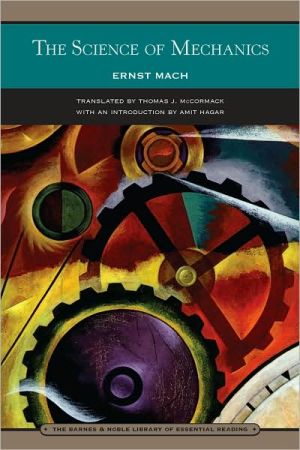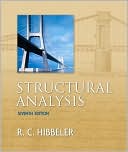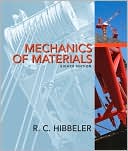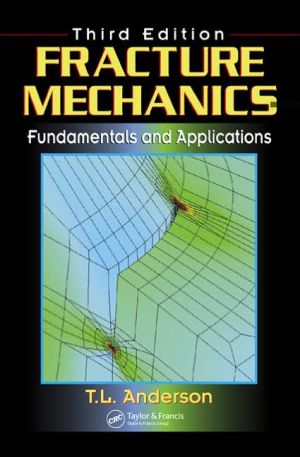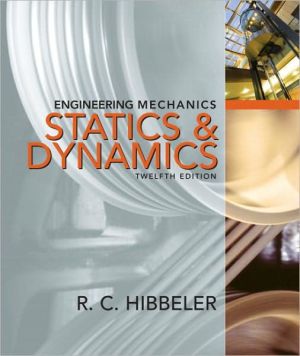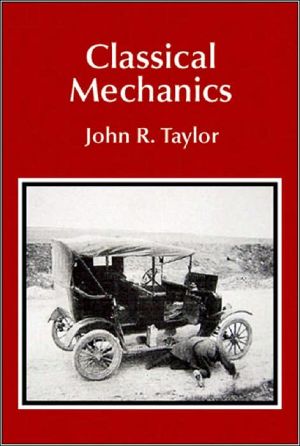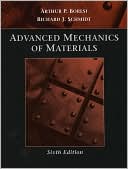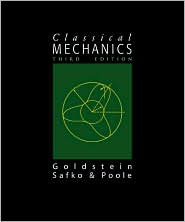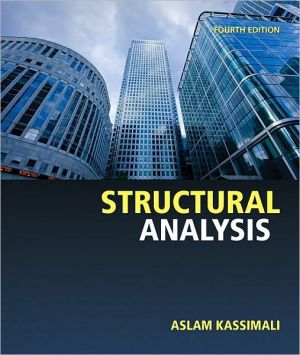The Science of Mechanics (Barnes & Noble Library of Essential Reading)
“I believe even that those who consider themselves as opponents of Mach are hardly aware of how much of Mach’s way of thinking they imbibed, so to speak, with their mother’s milk.” – Albert Einstein \ Ernst Mach’s Science of Mechanics (1883) remains one of the classics in the history and the philosophy of science. In this scholarly masterpiece Mach wished to eliminate all “metaphysical” concepts and to construct science with as few and as simple postulates as possible, explicating these...
Search in google:
“I believe even that those who consider themselves as opponents of Mach are hardly aware of how much of Mach’s way of thinking they imbibed, so to speak, with their mother’s milk.” – Albert Einstein Ernst Mach’s Science of Mechanics (1883) remains one of the classics in the history and the philosophy of science. In this scholarly masterpiece Mach wished to eliminate all “metaphysical” concepts and to construct science with as few and as simple postulates as possible, explicating these solely in terms of experience. This ideology behind Science of Mechanics, known also as “Mach’s Principle” when applied to the notion of Newtonian absolute space, was acknowledged by Einstein as the inspiration that led him to his general theory of relativity. The book has had an enormous influence on generations of scientists, historians, and philosophers, within the domains of physics and even outside it, and some of the twentieth century’s most important ideas, such as positivism, behaviorism, empiricism, conventionalism, and pragmatism, can be traced to its pages.
Ernst Mach’s Science of Mechanics (1883) remains one of the classics in the history and the philosophy of science. An example of the author’s most characteristic writing about the methodology of physics, it still serves as a source for many of the debates on modern philosophy of science. In this scholarly masterpiece Mach wished to eliminate all “metaphysical” concepts and to construct science with as few and as simple postulates as possible, explicating these solely in terms of experience. This ideology behind Science of Mechanics, known also as “Mach’s Principle” when applied to the notion of Newtonian absolute space, was acknowledged by Einstein as the inspiration that led him to his general theory of relativity. The book has had an enormous influence on generations of scientists, historians, and philosophers, within the domains of physics and even outside it, and some of the twentieth century’s most important ideas, such as positivism, behaviorism, empiricism, conventionalism, and pragmatism, can be traced to its pages.\ Ernst Mach (1838–1916) was a physicist, a physiologist, a historian of science, and a philosopher. Within physics, where his contributions almost got him the Nobel Prize (with letters of recommendation from such eminent figures as Hendrik A. Lorentz), his interests spanned acoustics, optics, and mechanics, and the history thereof. But his influence extended much beyond physics, just as beyond the borders of his homeland Austria. After Mach assumed his chair in Experimental Physics at the University of Prague in 1867, a wide-reaching network of both admirers and harsh critics of his ideas was formed, that within a few decades made him one of the most influential figures in the shaping of the modern worldview. As the historian Gerard Holton’s notes, the scope of this influence was truly amazing, for Mach’s work was soon discussed, debated, and used not only by physicists but also by major thinkers in mathematics, logic, biology, physiology, psychology, economics, history and philosophy of science, jurisprudence, sociology, anthropology, literature, architecture, and education. Albert Einstein said it even more strikingly in his obituary for Mach in 1916: “I believe even that those who consider themselves as opponents of Mach are hardly aware of how much of Mach’s way of thinking they imbibed, so to speak, with their mother’s milk.”\ Mach was born in 1838 in Chrlice (now part the Czech Republic, then the Austrian empire). His parents educated him at home up to the age of fifteen, when he entered a Gymnasium. The young Mach didn’t really impress the Benedictine fathers of the Gymnasium who thought him to be “unteachable and without talent,” yet in 1855 he entered the University of Vienna, where he studied mathematics, physics, and philosophy, and received a doctorate in physics in 1860. In 1864 he took a job as professor of mathematics in Graz, and in 1866 he was appointed as professor of physics. In 1867 he accepted the chair of Experimental Physics at the University of Prague, where he stayed for twenty-eight years. In 1896 he suffered a stroke and in 1901 retired from the University and was appointed to the upper chamber of the Austrian parliament. On leaving that post in 1913 he moved to his son’s home near Munich, where he continued writing until his death in 1916.\ Science of Mechanics is a historico-philosophical account of the development of the branch of physics, which according to Mach is “at once the oldest and the simplest.” Using penetrating historical analysis and concrete examples, Mach develops his views on general methodological questions (e.g., the unity of science and the notion of scientific explanation) and on concrete contemporary open questions in physics, such as the concepts of mass and inertia, the nature of space and time, and the status of the atomic theory. Throughout the book, which incorporates beautiful illustrations, Mach emphasizes the role of empirical generalizations and the economy of scientific description. Starting from the simplest notions possible, that of an equilibrium and a lever (Archimedes, 287–212 BC), Mach leads his reader gently but authoritatively through the development of scientific thought, culminating in the Newtonian system and its extensions to Hamiltonian dynamics. The result is widely acknowledged as a masterpiece in the history of physics, whose level of breadth and depth was achieved only by few after Mach.\ Mach divides his discussion on the history of mechanics to two subject matters, namely, statics (equilibrium) and dynamics (motion), before exploring the principles of Newtonian mechanics in its various forms. Throughout the book, he compliments the historical outlook with methodological and philosophical remarks, mostly on the rationalization of the assumptions that were used in the development of the corpus of knowledge that comprise mechanics, and their application in other domains of science. The study ends with an appendix, which is actually an extended footnote to the entire book, with reference to the relevant pages.\ The edition reprinted here is the fourth, and since its original date of print (1919) two more editions have appeared. The only discrepancy between this edition and the sixth (1960) is a short section in the appendix in which Mach responds to critics of his first German edition. Yet even there, Mach’s remarks on, for example, Newtonian Absolute space, are basically a repetition of the arguments he makes in this text.\ From a methodological perspective, Mach celebrated Newton’s principles of motion as introducing unity and homogeneity into the sciences: “all phenomena of a mechanical kind now appear to us as uniform throughout and as made up of the same elements.” But Mach was not as convinced when it came to Newton’s metaphysics of space and time. Indeed, Science of Mechanics includes the most sustained, comprehensive, and influential attack on Newtonian absolute space. Here Mach accuses Newton of violating his own methodological precepts by going well beyond what the observational facts teach us concerning motion and acceleration. Mach’s target is Newton’s famous bucket experiment, which he interpreted (albeit erroneously, as argued by the philosophers Huggett and Hofer) as aiming to establish the existence of absolute space. Mach’s response to this interpretation follows Bishop Berkeley, and amounts to the claim that one can account for the inertial effects (the deformation of the water surface in the bucket that rotates) by referring to the fixed stars, or to the entire distribution of matter in the universe, with no recourse to the metaphysical notion of absolute space.\ Mach’s relationalist (as opposed to absolutist) view of inertia—his attempt to explain inertial effects with dynamical interactions between material bodies without any reference to an additional “spacetime container” in which these bodies are “immersed”—was later dubbed as “Mach’s Principle” and was acknowledged by Einstein as the main motivation for his generalizing the special theory of relativity. While the end result made inertia equivalent to free falling (and thus equated gravity with the curvature of spacetime), the consensus among historians and philosophers of physics (including Einstein himself) is that the general theory of relativity failed to fulfill its “Machian” aspirations since the notion of acceleration—albeit now equated with gravity—remained absolute. Modern relationalists such as Barbour and Bertotti have attempted to go beyond general relativity and to construct a fully relationalist theory of spacetime, but these efforts have yet to yield empirically adequate results.\ Mach’s Science of Mechanics was first translated into English in 1893 and printed in the Open Court Publishing Company in La Salle, Illinois. The founder of this company, Paul Carus, was a great admirer of Mach, and was highly instrumental in introducing his ideas into the United States. As Mach himself noted with satisfaction, the book had a much larger distribution in the English version brought out by Carus than in the original German one. The Open Court was also the publishing home of The Monist, whose first issue (1890) hosted Mach’s article on sensation and included the following introduction by Mach: “The time seems ripe for the overthrow of all metaphysical philosophies. I contribute this article to your magazine in the confidence that America is the place where the new views will be most developed. E. M.”\ Mach was right. His anti-metaphysical ideas soon caught the attention of major intellectual figures such as C. S. Pierce and William James whose pragmatism overlapped Mach’s views in many ways. Another famous thinker and one of the major psychologists of the recent period, B. F. Skinner, was to his death undoubtedly the most direct and self-confessed disciple of Ernst Mach among native-born twentieth-century American scientists.\ Mach’s influence on American physics and philosophy of science was less direct but still as strong as his influence on American psychology. Through the members of the famous Vienna Circle who exiled to the United States during World War II and who were fascinated with Mach’s extreme empiricism and positivism, it mostly perpetuated the idea that since all our testimonies concerning the so-called external world rely only on sensations, we can and must take these sensations and complexes of sensations to be the sole content of those testimonies. This influence mutated in the United States with the work of eminent scholars such as Philip Frank (who was recommended by Einstein as his successor at the University of Prague and was invited to Harvard by the physicist P. Bridgeman), Herbert Feigel (who was the protégée student of Moriz Schlick, one of the founders of the Vienna Circle), Rudolph Carnap (the famous logico-empiricist) and W. V. O. Quine (who was Skinner’s fellow student at Harvard).\ Mach’s strict empiricism, as influential as it was, has also made him a fierce opponent of the physics of the turn of the twentieth century. Two incidents, namely, his alleged opposition to Einstein’s relativity theories and his well-known battle with the proponents of the atomic hypothesis, are worth mentioning here.\ As noted above, Science of Mechanics was highly instrumental in paving the road to Einstein’s theories of relativity. Indeed, Mach’s favorite physicist, Joseph Petzoldt wrote in his 1921 postscript to the eighth German edition of the book: “The theory of relativity … is the golden fruit of [Mach's] tree of thought.” But to much surprise, when Mach’s posthumous book on optics (Die Prinzipien der physikalischen Optik) appeared, also in 1921, it included a preface by Mach, dated July 1913, in which the relativity theory is sternly rejected. Anti-relativists were quick to welcome Mach as an ally, while others, including Einstein, attributed this repudiation to his deteriorating health. Contemporary philosophers often use this incident as evidence for the dogmatic character of positivism, but recently a controversy has emerged with respect to the authenticity of this “lapse.” In fact, the historian Gereon Wolters shows in his Mach I Mach II & Einstein’s Relativity (1987) that Mach's reputation has suffered unjustly. He claims that the Optik preface is, simply put, a forgery and that it was written by Mach’s son, Ludwig, who prepared the manuscript for publication. Wolters supports his claim with ample circumstantial but overwhelming evidence, and his book has been widely reviewed and discussed by many historians of science.\ While Mach’s attitude toward relativity is still under dispute, there is a broad consensus on his view of the atomic hypothesis. This view, to say the least, was not favorable, and remained so even until his death, the year in which J. Perrin established the existence of molecules by corroborating Einstein’s calculations of Brownian motion. Science of Mechanics contains a lucid example of Mach’s negative view of atomism: “… Atoms cannot be perceived by the senses; like all substances, they are things of thought…. The atomic theory plays a part in physics similar to that of certain auxiliary concepts in mathematics; it is a mathematical model for facilitating the mental reproduction of facts.” Mach’s view, in a nutshell, is that the atomic hypothesis, albeit central to the work of eminent physicists such as J. C. Maxwell, L. Boltzmann, A. Einstein, and W. Gibbs, should be considered a chimera, a mere metaphysical assumption, impossible to prove or disprove.\ Mach was fiercely attacked by fellow physicists for rejecting what seemed to be such a fruitful hypothesis that led to so many developments in physics, and the debate on the status of the atomic hypothesis soon became a debate on the progress of science. This debate is still relevant today, when modern physics faces some of its most difficult challenges ever, namely, completing the standard model of particle physics and extending this model to include the effects of gravity.\ Science of Mechanics is a great example of the fruitfulness of historico-philosophical studies, and much of its spirit remains relevant to such studies even today. Reading Mach is a fascinating experience, and his reflections, right or wrong, express the fruits of an original and unique mind. For this reason, if no other, Science of Mechanics will remain an enduring classic in the history and the philosophy of science.\ Amit Hagar holds a Ph.D. in philosophy from the University of British Columbia and is currently an assistant professor in the department of history and philosophy of science (HPS) at Indiana University, Bloomington. His main interests span the foundations of modern physics, the philosophy of time, and the notion of physical computation, especially in the context of quantum information theory.
